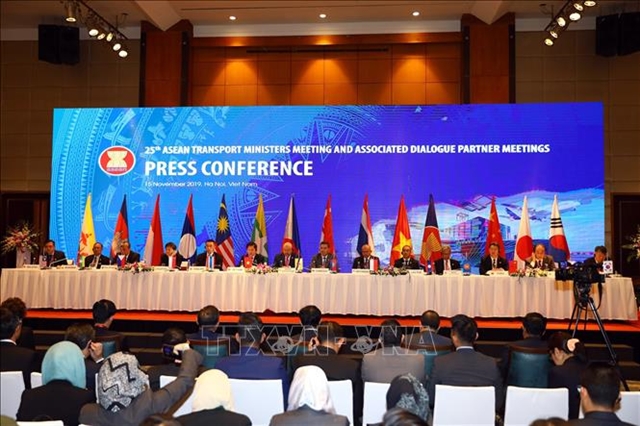 Economy
Economy


|
| In a signing ceremony wrapping up the two-day-long 25th ASEAN Transport Ministers’ Meeting (ATM) in Hà Nội, 10 attending ministers signed a protocol to support air transport ancillary services within the bloc. — VNA/VNS Photo Huy Hùng |
HÀ NỘI — Transport ministers of the Association of Southeast Asian Nations (ASEAN) yesterday adopted two protocols to integrate the air transport in the region, moving towards the ambitious goal of a single aviation market.
In a signing ceremony wrapping up the two-day-long 25th ASEAN Transport Ministers’ Meeting (ATM) in Hà Nội, 10 attending ministers signed a protocol to support air transport ancillary services within the bloc.
They also passed another protocol to recognise each other’s flight simulation training devices.
“Our bloc and partners have been co-operating and co-ordinating to better develop the aviation network,” Minister of Transport Nguyễn Văn Thể said following the signing ceremony.
“But besides the two signed protocols, we also reached agreement on various programmes and projects to develop transport connectivity, especially co-operation programmes between ASEAN and three partner countries in 2020 and some long-term visions for the coming years,” he said.
Three separate meetings between ASEAN and China, Japan and South Korea were held on the sideline of the ATM this year, as ministers discussed activities and projects to enhance transport connectivity between bloc members and partners.
While the 25th ATM revolved around regional air connectivity, co-operation in rail transport was almost absent from the agenda.
Minister Thể acknowledged the sector’s absence in the bloc’s discussions, blaming it on the costly investment for railways which made the countries hesitant to expand their train networks.
“Most of the countries in the region aren’t that well-off so they often seek co-operation with other countries, usually via official development assistance (ODA),” he said.
The biggest rail project ASEAN was working on was an inter-region rail line starting from Singapore all the way to Kunming, China, according to Thể.
Việt Nam was still preparing for its mega project North-South High-speed Railway and two lines connecting Việt Nam with Laos and Cambodia, he added. — VNS




